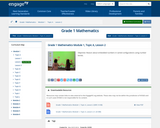
Reason about embedded numbers in varied configurations using number bonds.
- Subject:
- Mathematics
- Numbers and Operations
- Material Type:
- Learning Task
- Author:
- Engage New York
- Date Added:
- 04/24/2018

Reason about embedded numbers in varied configurations using number bonds.
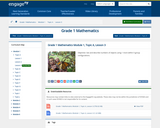
See and describe numbers of objects using 1 more within 5-group configurations.

Represent put together situations with number bonds. Count on from one embedded number or part to totals of 6 and 7 and generate all addition expressions for each total.
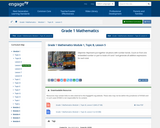
Represent put together situations with number bonds. Count on from one embedded number or part to totals of 6 and 7 and generate all addition expressions for each total.
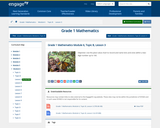
Use the place value chart to record and name tens and ones within a two-digit number up to 100.
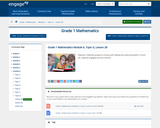
fluency with adding and subtracting within 10
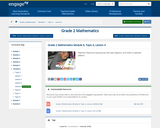
Objective: Represent equal groups with tape diagrams, and relate to repeated addition.

This task requires students to think about and compare fractions.
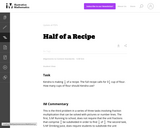
This task involves fraction multiplication that can be solved with pictures or number lines.
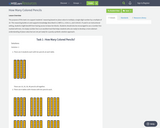
The purpose of this task is to support students' reasoning based on place value to multiply a single digit number by a multiple of 10. This reasoning builds on and supports knowledge described in 2.NBT.A.1, 3.OA.A.1, and 3.OA.B.5. If used in an instructional setting, students might benefit from having access to base-ten blocks. Students should also be encouraged to use a number line marked with tens. An empty number line is an excellent tool that helps students who are ready to develop a more abstract understanding of place value but are not yet ready for a purely symbolic solution approach.

This task gives children an opportunity to subtract a three-digit number including a zero that requires regrouping. The solutions show how students can solve this problem before they have learned the traditional algorithm.
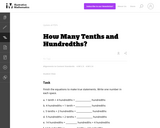
This task requires students to add tenths and hundredths.

The purpose of this task is to help students see the connection between aÖb and ab in a particular concrete example. The relationship between the division problem 3Ö8 and the fraction 3/8 is actually very subtle.
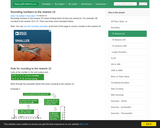
In third grade, students "use place value understanding to round whole numbers to the nearest 10 or 100" (3.NBT.A.1). The purpose of this task is for students to practice rounding numbers to the nearest ten, utilizing a flow chart. We then connected the flow chart and rules for rounding with location on the number line, and to introduce the idea of rounding to the nearest 100. This task naturally builds towards 3.NBT, 4.NBT Rounding to the Nearest 100 and 1000. Together then we created an anchor chart to utilize when rounding.
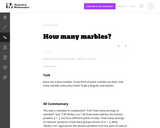
This task addresses the division problem 4Ö1/3.

This task provides a context for performing division of a whole number by a unit fraction. This problem is a "How many groups?'' example of division.
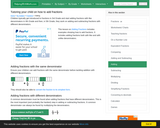
This lesson was used with a tier 3 fourth grade intervention math group to help students understand how to add fractions with like denominators and unlike denominators. It includes worksheets.
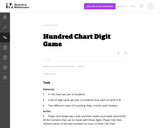
Students play a game in pairs to read and recognize numbers using a 100 chart.
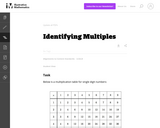
The goal of this task is to work on finding multiples of some whole numbers.

What coins are in the bank? This 3 Act Task by Graham Fletcher begins with a short video. Coins are added to a bank that totals the value of the coins. Some of the coins and values are hidden as he adds them to the bank. First students make observations and estimates to begin determining which coins could be in the bank to total $1.00. Students then use images of the types of coins used and how many total coins are in the bank. Students are estimating, determining values of coins, problem solving, and adding, to determine coins in the bank.